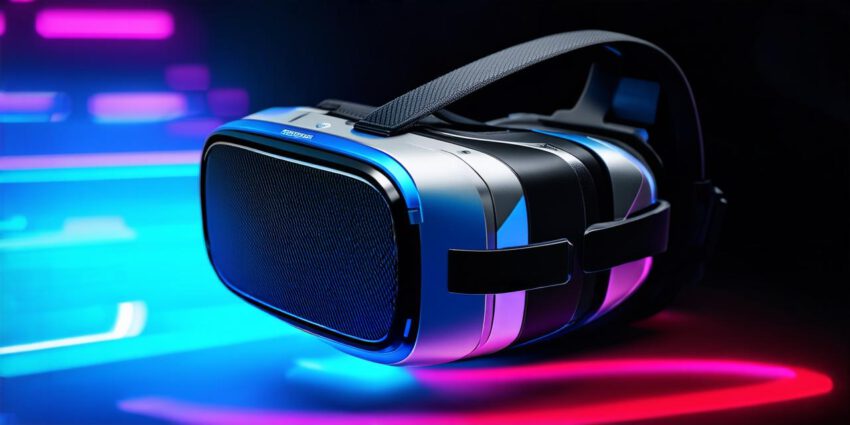Virtual reality (VR) technology has been gaining popularity in recent years, thanks to advancements in hardware and software. It’s an immersive experience that transports users into a digital world, allowing them to interact with the environment as if they were truly there. But what exactly is VR technology, and how does it work? In this article, we’ll explore whether VR is considered 3D or 4D, and how it differs from other forms of technology.
What Is Virtual Reality Technology?
Virtual reality technology is a computer-generated simulation that immerses users in a digital environment. It was first invented in the 1960s by Ivan Sutherland, who created the first VR system called “Sword of Damocles”. However, it wasn’t until the early 2000s that VR technology became more accessible and affordable, thanks to advancements in hardware and software.
The core component of VR technology is a head-mounted display (HMD) or headset, which tracks the user’s movements and provides a realistic view of the digital environment. Other components include sensors, controllers, and motion tracking systems that allow users to interact with the virtual world.
How Does Virtual Reality Technology Work?
Virtual reality technology works by creating a 360-degree view of the user’s surroundings. The HMD has multiple screens that display different images, depending on where the user is looking. This creates the illusion of depth and perspective, making it seem as though the user is in a real-world environment.
In addition to the HMD, VR technology also uses motion tracking systems to track the user’s movements. These sensors detect changes in the user’s position, orientation, and movement, allowing the virtual world to respond accordingly. This creates a seamless experience that makes the user feel as though they are truly in the digital environment.
Is Virtual Reality Technology 3D or 4D?
Virtual reality technology is often referred to as 3D, but it’s actually more complex than that. While VR does create a three-dimensional representation of the user’s surroundings, it also incorporates elements of both 2D and 4D technology.
On one hand, VR technology uses 2D images on the HMD to create depth and perspective. These images are projected onto different screens in the headset, creating the illusion of a three-dimensional environment. This is similar to how traditional 2D media like movies and TV shows use perspective and depth cues to create the illusion of distance and depth.
On the other hand, VR technology also incorporates elements of 4D technology, which is a term used to describe any form of technology that adds an extra dimension beyond the three dimensions of space. In the case of VR, this extra dimension is time.
Virtual reality technology allows users to experience a digital environment in real-time, making it feel as though they are truly present. This creates a unique and immersive experience that can be difficult to replicate with other forms of media.
Real-Life Examples of Virtual Reality Technology
Virtual reality technology is being used in a variety of industries, from gaming to healthcare to education. Here are a few real-life examples:
- Gaming: Virtual reality technology has revolutionized the gaming industry, allowing players to fully immerse themselves in a digital world. Games like "Beat Saber" and "Job Simulator" use VR technology to create a highly engaging and immersive gaming experience.
- Healthcare: Virtual reality technology is being used in healthcare to treat a variety of conditions, including PTSD, anxiety disorders, and chronic pain. For example, the company "PsychotherapyVR" has created a VR program that helps patients with PTSD confront their fears in a safe and controlled environment.
- Education: Virtual reality technology is being used in education to create interactive and engaging learning experiences. For example, the company "Discovery VR" has created a VR program that allows students to explore the human body in 3D.

The Future of Virtual Reality Technology
Virtual reality technology is still relatively new, but it’s already having a significant impact on many industries. As the technology continues to evolve, we can expect to see even more exciting and innovative uses for VR in the future.
One area where VR technology is expected to have a big impact is in the field of medicine. For example, VR technology could be used to simulate surgical procedures, allowing doctors to practice and perfect their skills before performing the actual procedure on a patient. This could potentially reduce the risk of complications and improve patient outcomes.
Another area where VR technology is expected to have a big impact is in the field of entertainment. We could see more immersive gaming experiences, as well as new forms of interactive movies and TV shows.
Summary
Virtual reality technology is an exciting and innovative form of technology that has the potential to revolutionize many industries. While it’s often referred to as 3D, it’s actually more complex than that, incorporating elements of both 2D and 4D technology. As the technology continues to evolve, we can expect to see even more exciting and innovative uses for VR in the future.
FAQs
Virtual reality technology is a computer-generated simulation that immerses users in a digital environment. It works by creating a 360-degree view of the user’s surroundings and tracking their movements using sensors and motion tracking systems.
Virtual reality technology is often referred to as 3D, but it’s actually more complex than that. It incorporates elements of both 2D and 4D technology, with the extra dimension being time.
Virtual reality technology is being used in a variety of industries, from gaming to healthcare to education. Some examples include “Beat Saber” and “Job Simulator” in gaming, as well as PTSD treatment programs in healthcare.
Virtual reality technology is still relatively new, but it’s already having a significant impact on many industries. We can expect to see even more exciting and innovative uses for VR in the future, particularly in fields like medicine and entertainment.

